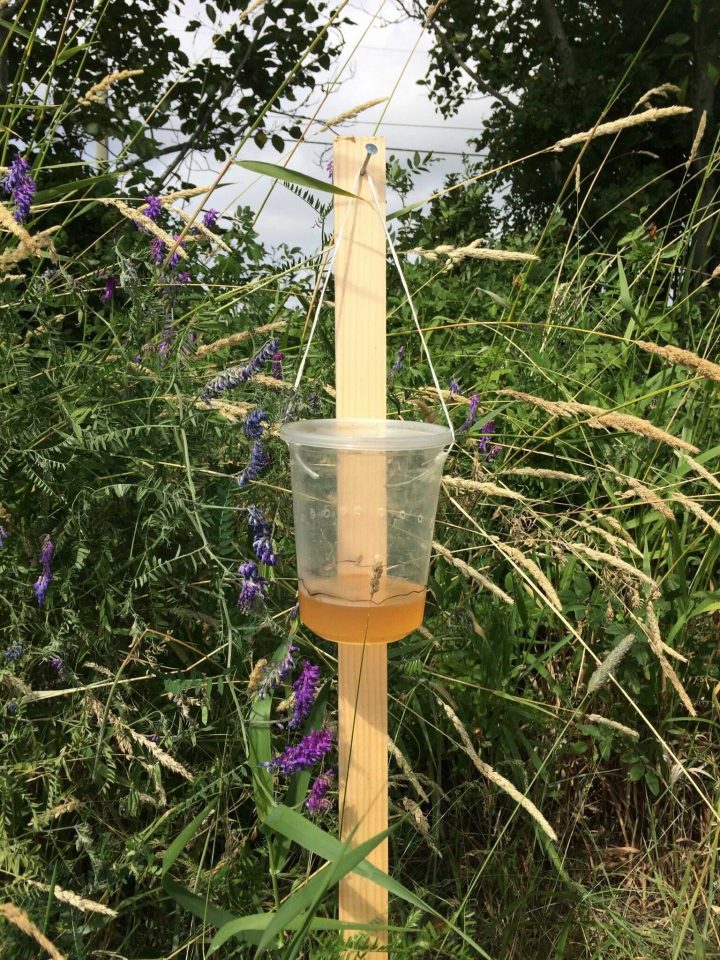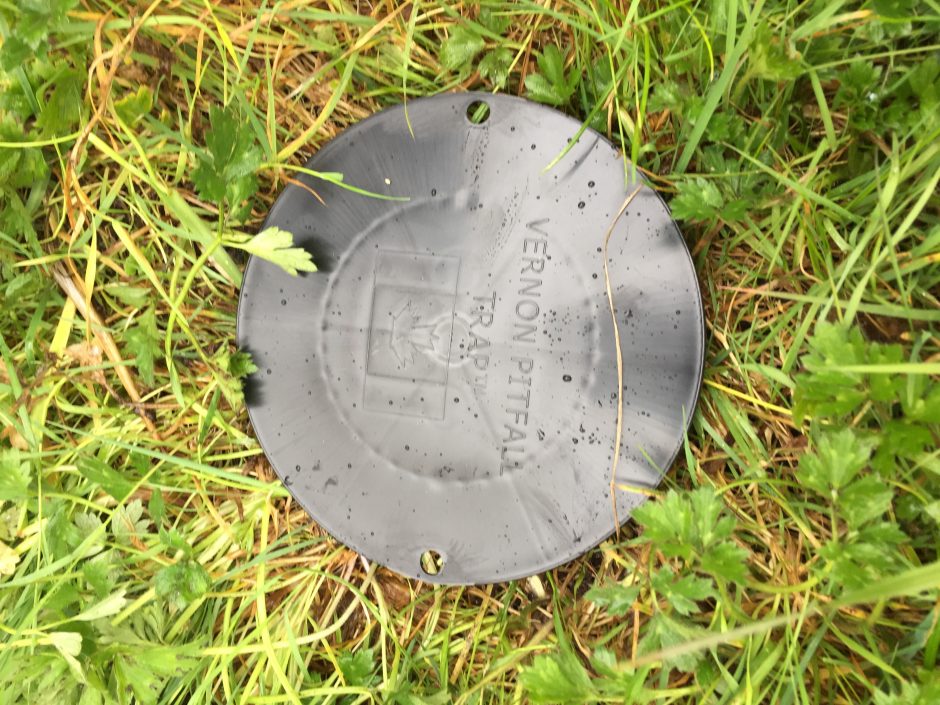Project collaborators: Melody Sizer, Nisa Chavez, Carly McGregor, Grace Wang, Martina Clausen
Spotted wing drosophila and click beetles are pests of economic concern in BC. This long-term project will monitor for spotted wing drosophila and two
species of click beetles, using apple cider vinegar and pheromone traps in different landscape elements at the UBC
farm. The collected data will measure fluctuations in pest abundance in different habitat elements over time.
Drosophila suzukii, otherwise known as the spotted wing drosophila or SWD, is an invasive species of vinegar fly native to Southeast Asia that now poses a considerable economic threat to berry and small fruit growers across North America. First recorded in the continental United States in California in 2008, this pest spread rapidly and was discovered in every major small fruit growing region from Southern California to British Columbia by 2009. Contrary to the ecology of the majority of other fruit flies, which lay their eggs in overripe and rotting fruit, D. suzukii utilizes its large serrated ovipositor to puncture the skin of healthy fruits. The evolving larvae causes the fruit to become soft and rotten, leading to decreased crop yields and substantial economic losses.
Click beetles (aka wireworms) are insect pests capable of causing significant damage. They can spend up to six years in the larval stage, and during that time they can do a lot of harm by seeking out the seeds and roots of a number of crops. We are monitoring for two species of click beetle at the UBC Farm, Agriotes lineatus and Agriotes obscurus, using pitfall traps baited with pheromone lures. In total, we deployed 20 traps paired in ten locations, with each location possessing one trap baited for A. lineatus and one trap baited for A. obscurus. Each week from April to December samples are collected from these traps and the click beetles are identified and counted, with sex ratio of click beetles recorded as well. This project enables long-term estimates of click-beetle populations at the UBC Farm, while also providing long-term biodiversity estimates of ground-dwelling insects at the farm in general.


